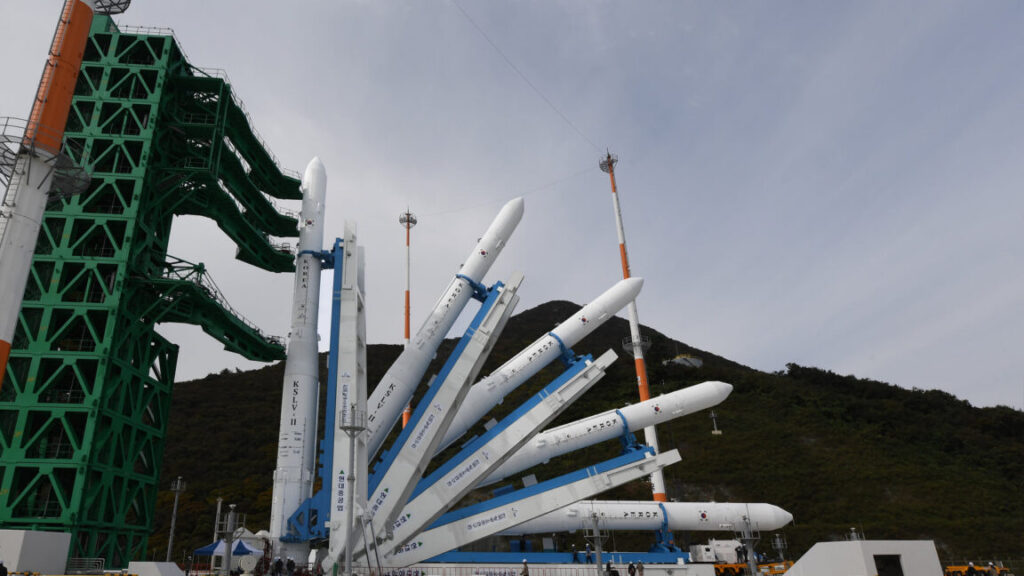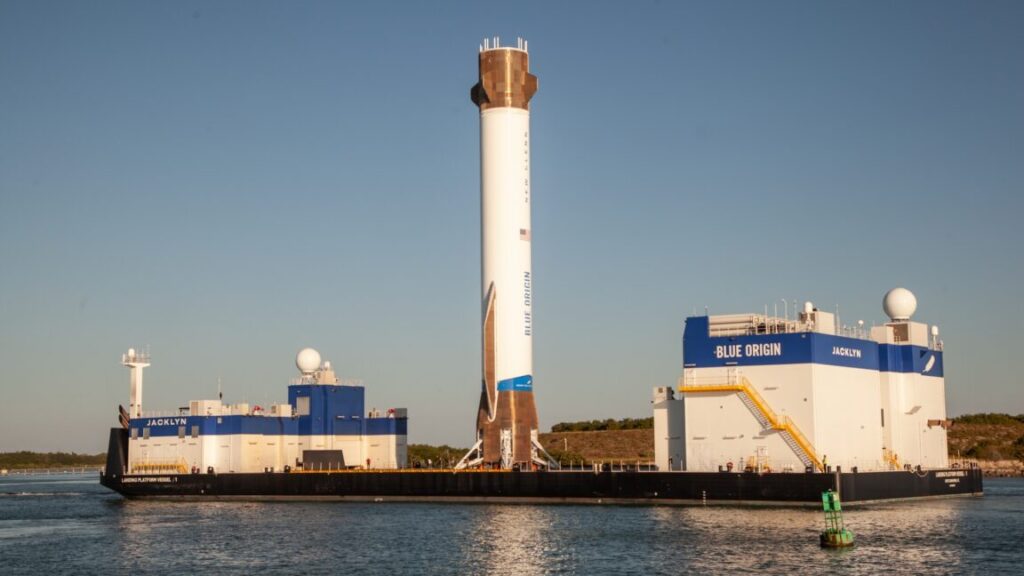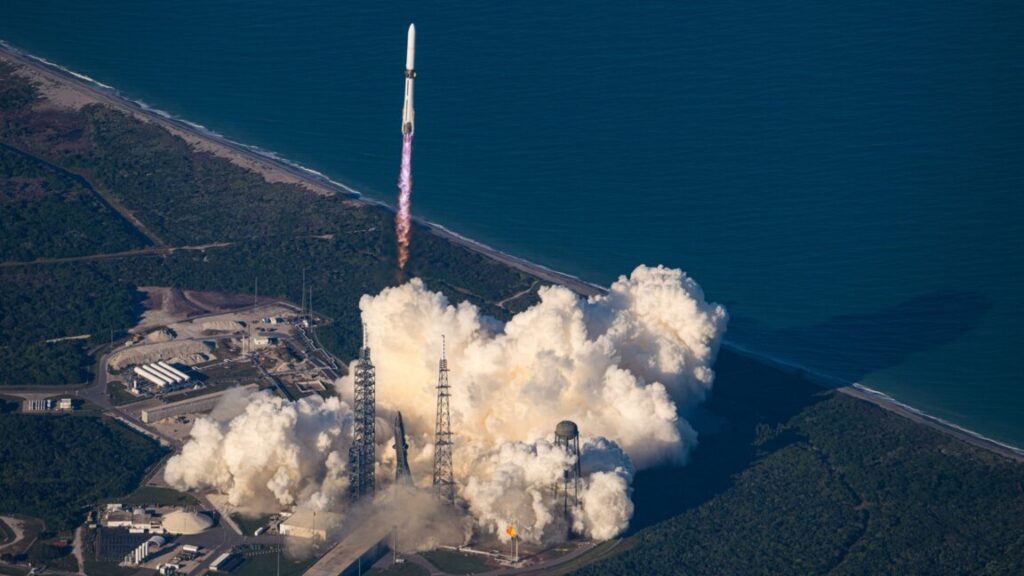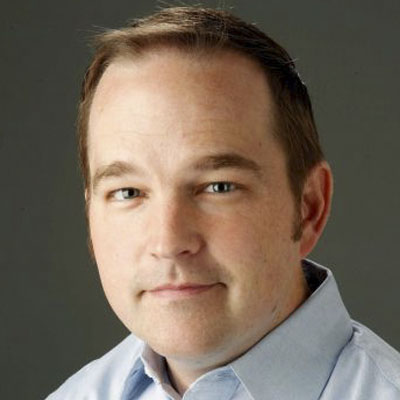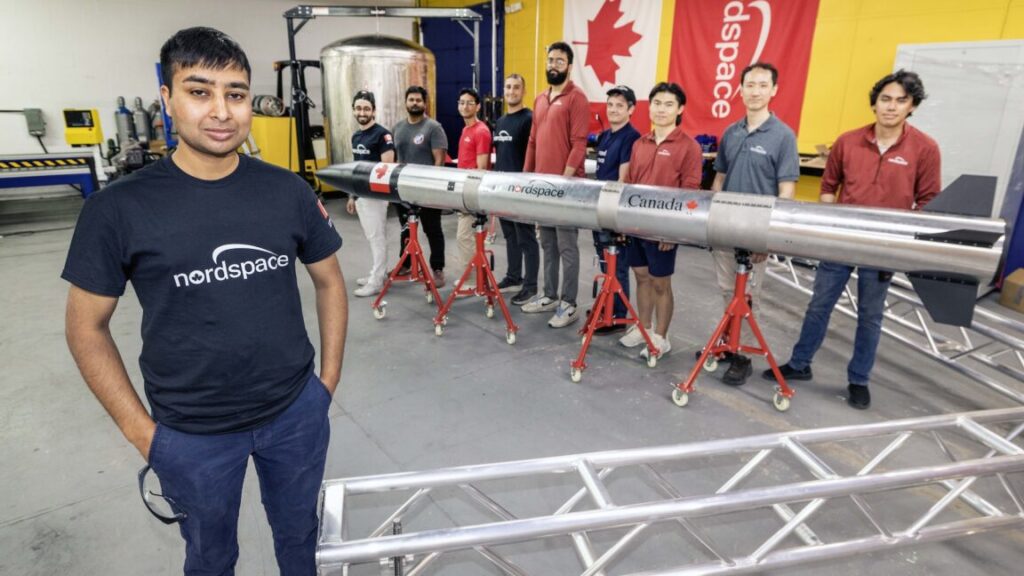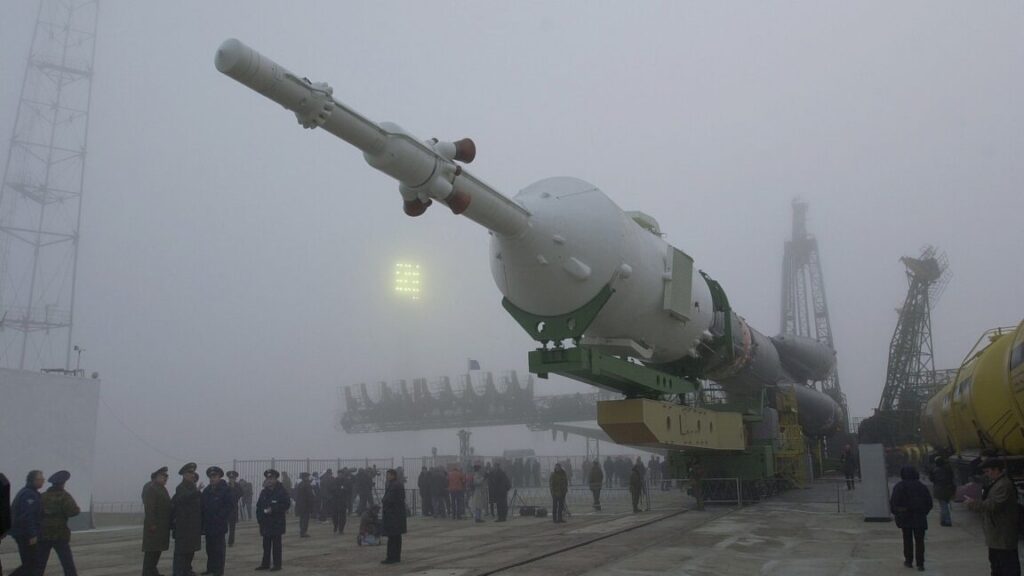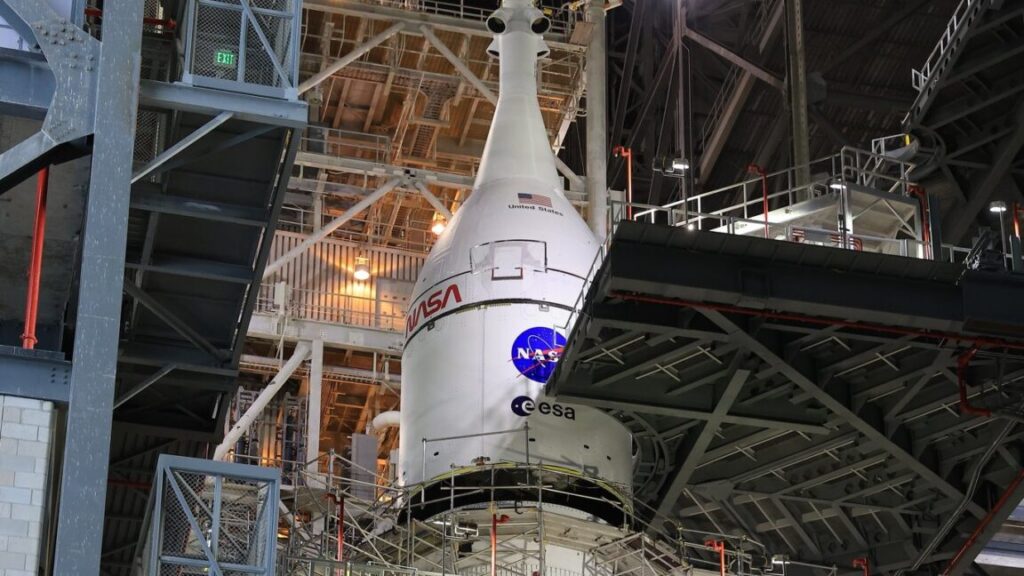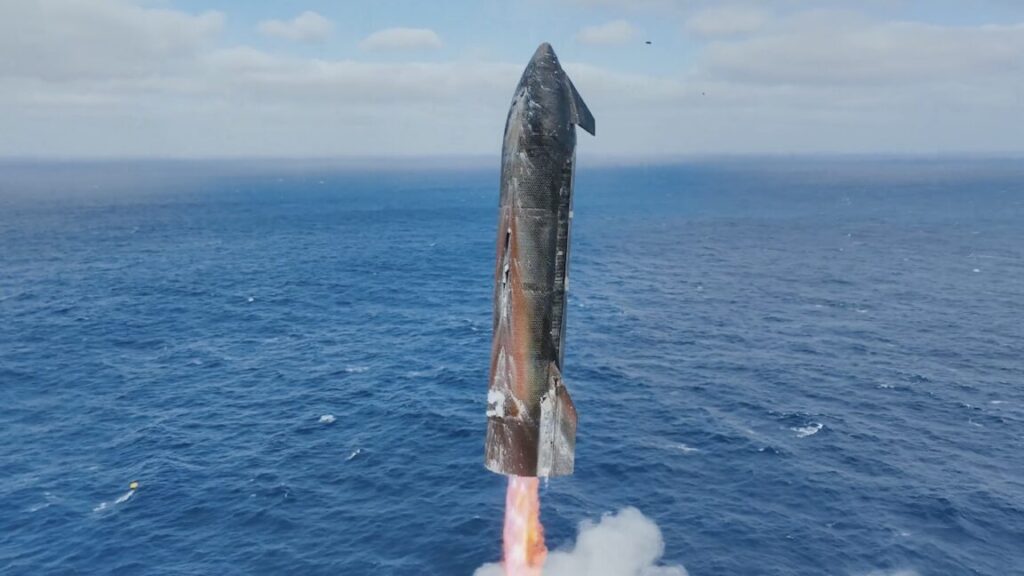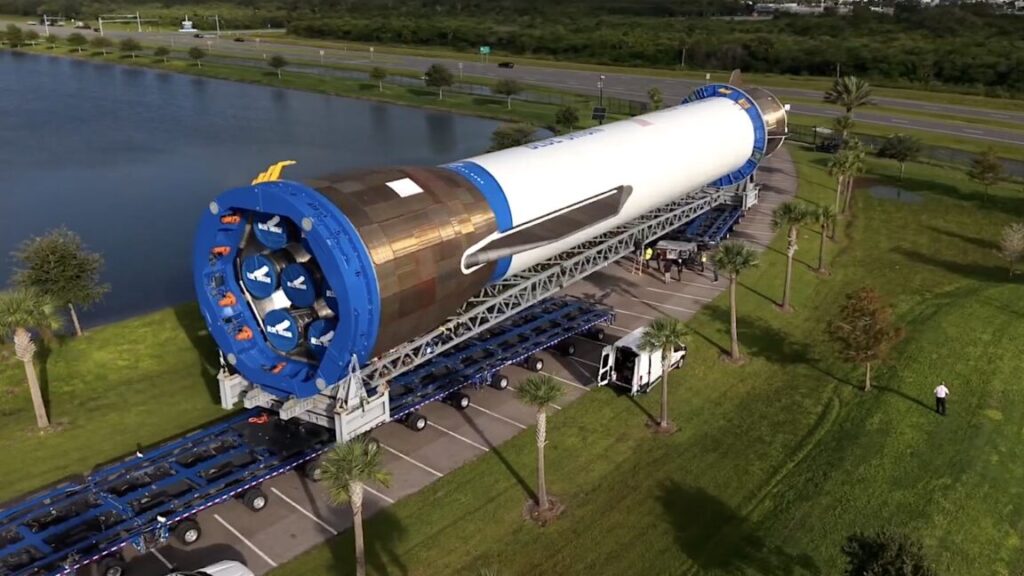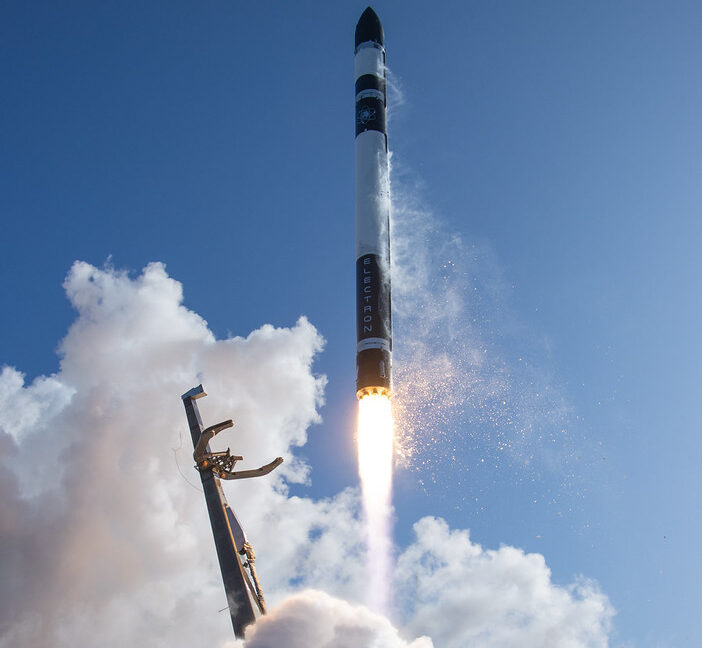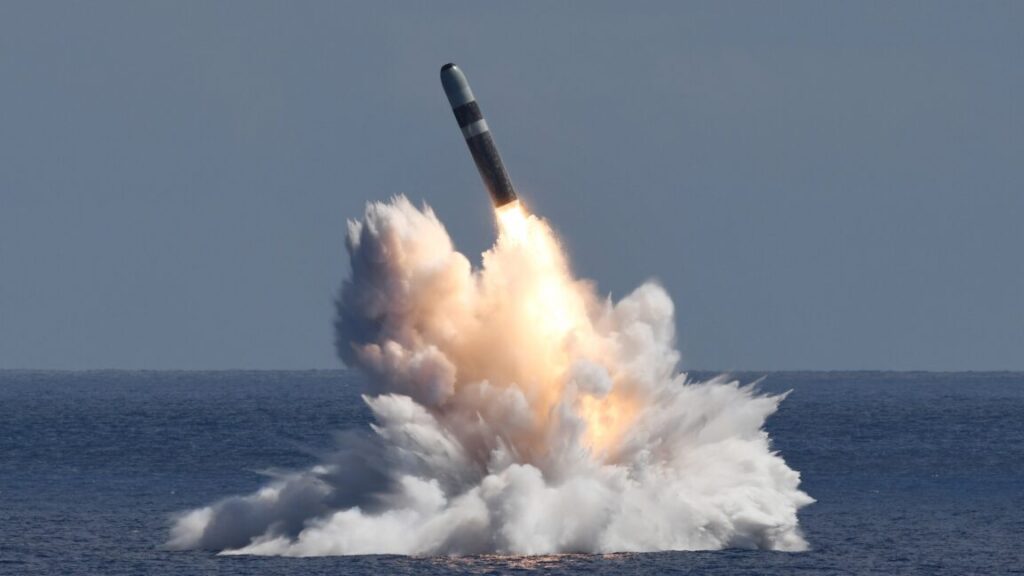Rocket Report: Blunder at Baikonur; do launchers really need rocket engines?
The Department of the Air Force approves a new home in Florida for SpaceX’s Starship.
South Korea’s Nuri 1 rocket is lifted vertical on its launch pad in this multi-exposure photo. Credit: Korea Aerospace Research Institute
Welcome to Edition 8.21 of the Rocket Report! We’re back after the Thanksgiving holiday with more launch news. Most of the big stories over the last couple of weeks came from abroad. Russian rockets and launch pads didn’t fare so well. China’s launch industry celebrated several key missions. SpaceX was busy, too, with seven launches over the last two weeks, six of them carrying more Starlink Internet satellites into orbit. We expect between 15 and 20 more orbital launch attempts worldwide before the end of the year.
As always, we welcome reader submissions. If you don’t want to miss an issue, please subscribe using the box below (the form will not appear on AMP-enabled versions of the site). Each report will include information on small-, medium-, and heavy-lift rockets, as well as a quick look ahead at the next three launches on the calendar.

Another Sarmat failure. A Russian intercontinental ballistic missile (ICBM) fired from an underground silo on the country’s southern steppe on November 28 on a scheduled test to deliver a dummy warhead to a remote impact zone nearly 4,000 miles away. The missile didn’t even make it 4,000 feet, Ars reports. Russia’s military has been silent on the accident, but the missile’s crash was seen and heard for miles around the Dombarovsky air base in Orenburg Oblast near the Russian-Kazakh border. A video posted by the Russian blog site MilitaryRussia.ru on Telegram and widely shared on other social media platforms showed the missile veering off course immediately after launch before cartwheeling upside down, losing power, and then crashing a short distance from the launch site.
An unenviable track record … Analysts say the circumstances of the launch suggest it was likely a test of Russia’s RS-28 Sarmat missile, a weapon designed to reach targets more than 11,000 miles (18,000 kilometers) away, making it the world’s longest-range missile. The Sarmat missile is Russia’s next-generation heavy-duty ICBM, capable of carrying a payload of up to 10 large nuclear warheads, a combination of warheads and countermeasures, or hypersonic boost-glide vehicles, according to the Center for Strategic and International Studies. Simply put, the Sarmat is a doomsday weapon designed for use in an all-out nuclear war between Russia and the United States. The missile’s first full-scale test flight in 2022 apparently went well, but the program has suffered a string of consecutive failures since then, most notably a catastrophic explosion last year that destroyed the Sarmat missile’s underground silo in northern Russia.
The easiest way to keep up with Eric Berger’s and Stephen Clark’s reporting on all things space is to sign up for our newsletter. We’ll collect their stories and deliver them straight to your inbox.
ESA fills its coffers for launcher challenge. The European Space Agency’s (ESA) European Launcher Challenge received a significant financial commitment from its member states during the agency’s Ministerial Council meeting last week, European Spaceflight reports. The challenge is designed to support emerging European rocket companies while giving ESA and other European satellite operators more options to compete with the continent’s sole operational launch provider, Arianespace. Through the program, ESA will purchase launch services and co-fund capacity upgrades with the winners. ESA member states committed 902 million euros, or $1.05 billion, to the program at the recent Ministerial Council meeting.
Preselecting the competitors … In July, ESA selected two German companies—Isar Aerospace and Rocket Factory Augsburg—along with Spain’s PLD Space, France’s MaiaSpace, and the UK’s Orbex to proceed with the initiative’s next phase. ESA then negotiated with the governments of each company’s home country to raise money to support the effort. Germany, with two companies on the shortlist, is unsurprisingly a large contributor to the program, committing more than 40 percent of the total budget. France contributed nearly 20 percent, Spain funded nearly 19 percent, and the UK committed nearly 16 percent. Norway paid for 3 percent of the launcher challenge’s budget. Denmark, Portugal, Switzerland, and the Czech Republic contributed smaller amounts.
Europe at the service of South Korea. South Korea’s latest Earth observation satellite was delivered into a Sun-synchronous orbit Monday afternoon following a launch onboard a Vega C rocket by Arianespace, Spaceflight Now reports. The Korea Multi-Purpose Satellite-7 (Kompsat-7) mission launched from Europe’s spaceport in French Guiana. About 44 minutes after liftoff, the Kompsat-7 satellite was deployed into SSO at an altitude of 358 miles (576 kilometers). “By launching the Kompsat-7 satellite, set to significantly enhance South Korea’s Earth observation capabilities, Arianespace is proud to support an ambitious national space program,” said David Cavaillolès, CEO of Arianespace, in a statement.
Something of a rarity … The launch of Kompsat-7 is something of a rarity for Arianespace, which has dominated the international commercial launch market. It’s the first time in more than two years that a satellite for a customer outside Europe has been launched by Arianespace. The backlog for the light-class Vega C rocket is almost exclusively filled with payloads for the European Space Agency, the European Commission, or national governments in Europe. Arianespace’s larger Ariane 6 rocket has 18 launches reserved for the US-based Amazon Leo broadband network. (submitted by EllPeaTea)
South Korea’s homemade rocket flies again. South Korea’s homegrown space rocket Nuri took off from Naro Space Center on November 27 with the CAS500-3 technology demonstration and Earth observation satellite, along with 12 smaller CubeSat rideshare payloads, Yonhap News Agency reports. The 200-ton Nuri rocket debuted in 2021, when it failed to reach orbit on a test flight. Since then, the rocket has successfully reached orbit three times. This mission marked the first time for Hanwha Aerospace to oversee the entire assembly process as part of the government’s long-term plan to hand over space technologies to the private sector. The fifth and sixth launches of the Nuri rocket are planned in 2026 and 2027.
Powered by jet fuel … The Nuri rocket has three stages, each with engines burning Jet A-1 fuel and liquid oxygen. The fuel choice is unusual for rockets, with highly refined RP-1 kerosene or methane being more popular among hydrocarbon fuels. The engines are manufactured by Hanwha Aerospace. The fully assembled rocket stands about 155 feet (47.2 meters) tall and can deliver up to 3,300 pounds (1.5 metric tons) of payload into a polar Sun-synchronous orbit.
Hyundai eyes rocket engine. Meanwhile, South Korea’s space sector is looking to the future. Another company best known for making cars has started a venture in the rocket business. Hyundai Rotem, a member of Hyundai Motor Group, announced a joint program with Korean Air’s Aerospace Division (KAL-ASD) to develop a 35-ton-class reusable methane rocket engine for future launch vehicles. The effort is funded with KRW49 billion ($33 million) from the Korea Research Institute for Defense Technology Planning and Advancement (KRIT).
By the end of the decade … The government-backed program aims to develop the engine by the end of 2030. Hyundai Rotem will lead the engine’s planning and design, while Korean Air, the nation’s largest air carrier, will lead development of the engine’s turbopump. “Hyundai Rotem began developing methane engines in 1994 and has steadily advanced its methane engine technology, achieving Korea’s first successful combustion test in 2006,” Hyundai Rotem said in a statement. “Furthermore, this project is expected to secure the technological foundation for the commercialization of methane engines for reusable space launch vehicles and lay the groundwork for targeting the global space launch vehicle market.”
But who needs rocket engines? Moonshot Space, based in Israel, announced Monday that it has secured $12 million in funding to continue the development of a launch system—powered not by chemical propulsion, but electromagnetism, Payload reports. Moonshot plans to sell other aerospace and defense companies the tech as a hypersonic test platform, while at the same time building to eventually offer orbital launch services. Instead of conventional rocket engines, the system would use a series of electromagnetic coils to power a hardened capsule to hypersonic velocities. The architecture has a downside: extremely high accelerations that could damage or destroy normal satellites. Instead, Moonshot wants to use the technology to send raw materials to orbit, lowering the input costs of the budding in-space servicing, refueling, and manufacturing industries, according to Payload.
Out of the shadows … Moonshot Space emerged from stealth mode with this week’s fundraising announcement. The company’s near-term focus is on building a scaled-down electromagnetic accelerator capable of reaching Mach 6. A larger system would be required to reach orbital velocity. The company’s CEO is the former director-general of Israel’s Ministry of Science, while its chief engineer was the former chief systems engineer for David’s Sling, a critical part of Israel’s missile defense system. (submitted by EllPeaTea)

A blunder at Baikonur. A Soyuz rocket launched on November 27 carrying Roscosmos cosmonauts Sergei Kud-Sverchkov and Sergei Mikayev, as well as NASA astronaut Christopher Williams, for an eight-month mission to the International Space Station. The trio of astronauts arrived at the orbiting laboratory without incident. However, on the ground, there was a serious problem during the launch with the ground systems that support processing of the vehicle before liftoff at Site 31, located at the Baikonur Cosmodrome in Kazakhstan, Ars reports. Roscosmos downplayed the incident, saying only, in passive voice, that “damage to several launch pad components was identified” following the launch.
Repairs needed … However, video imagery of the launch site after liftoff showed substantial damage, with a large service platform appearing to have fallen into the flame trench below the launch table. According to one source, this is a platform located beneath the rocket, where workers can access the vehicle before liftoff. It has a mass of about 20 metric tons and was apparently not secured prior to launch, and the thrust of the vehicle ejected it into the flame trench. “There is significant damage to the pad,” said this source. The damage could throw a wrench into Russia’s ability to launch crews and cargo to the International Space Station. This Soyuz launch pad at Baikonur is the only one outfitted to support such missions.
China’s LandSpace almost landed a rocket. China’s first attempt to land an orbital-class rocket may have ended in a fiery crash, but the company responsible for the mission had a lot to celebrate with the first flight of its new methane-fueled launcher, Ars reports. LandSpace, a decade-old company based in Beijing, launched its new Zhuque-3 rocket for the first time Tuesday (US time) at the Jiuquan launch site in northwestern China. The upper stage of the medium-lift rocket successfully reached orbit. This alone is a remarkable achievement for a new rocket. But LandSpace had other goals for this launch. The Zhuque-3, or ZQ-3, booster stage is architected for recovery and reuse, the first rocket in China with such a design. The booster survived reentry and was seconds away from a pinpoint landing when something went wrong during its landing burn, resulting in a high-speed crash at the landing zone in the Gobi Desert.
Let the games begin … LandSpace got closer to landing an orbital-class booster than any other company on their first try. While LandSpace prepares for a second launch, several more Chinese companies are close to debuting their own reusable rockets. The next of these new rockets, the Long March 12A, is awaiting its first liftoff later this month from another launch pad at the Jiuquan spaceport. The Long March 12A comes from one of China’s established rocket developers, the Shanghai Academy of Spaceflight Technology (SAST), part of the country’s state-owned aerospace enterprise.
China launches a lifeboat. An unpiloted Chinese spacecraft launched on November 24 (US time) and linked with the country’s Tiangong space station a few hours later, providing a lifeboat for three astronauts stuck in orbit without a safe ride home, Ars reports. A Long March 2F rocket lifted off with the Shenzhou 22 spacecraft, carrying cargo instead of a crew. The spacecraft docked with the Tiangong station nearly 250 miles (400 kilometers) above the Earth about three-and-a-half hours later. Shenzhou 22 will provide a ride home next year for three Chinese astronauts. Engineers deemed their primary lifeboat unsafe after finding a cracked window, likely from an impact with a tiny piece of space junk.
In record time … Chinese engineers worked fast to move up the launch of the Shenzhou 22, originally set to fly next year. The launch occurred just 16 days after officials decided they needed to send another spacecraft to the Tiangong station. Shenzhou 22 and its rocket were already in standby at the launch site, but teams had to fuel the spacecraft and complete assembly of the rocket, then roll the vehicle to the launch pad for final countdown preps. The rapid turnaround offers a “successful example for efficient emergency response in the international space industry,” the China Manned Space Agency said. “It vividly embodies the spirit of manned spaceflight: exceptionally hardworking, exceptionally capable, exceptionally resilient, and exceptionally dedicated.”
Another big name flirts with the launch industry. OpenAI chief executive Sam Altman has explored putting together funds to either acquire or partner with a rocket company, a move that would position him to compete with Elon Musk’s SpaceX, the Wall Street Journal reports. Altman reached out to at least one rocket maker, Stoke Space, in the summer, and the discussions picked up in the fall, according to people familiar with the talks. Among the proposals was for OpenAI to make a multibillion-dollar series of equity investments in the company and end up with a controlling stake. The talks are no longer active, people close to OpenAI told the Journal.
Here’s the reason … Altman has been interested in building data centers in space for some time, the Journal reports, suggesting that the insatiable demand for computing resources to power artificial-intelligence systems eventually could require so much power that the environmental consequences would make space a better option. Orbital data centers would allow companies to harness the power of the Sun to operate them. Alphabet’s Google is pursuing a similar concept in partnership with satellite operator Planet Labs. Jeff Bezos and Musk himself have also expressed interest in the idea. Outside of SpaceX and Blue Origin, Stoke Space seems to be a natural partner for such a project because it is one of the few companies developing a fully reusable rocket.

SpaceX gets green light for new Florida launch pad. SpaceX has the OK to build out what will be the primary launch hub on the Space Coast for its Starship and Super Heavy rocket, the most powerful launch vehicle in history, the Orlando Sentinel reports. The Department of the Air Force announced Monday it had approved SpaceX to move forward with the construction of a pair of launch pads at Cape Canaveral Space Force Station’s Space Launch Complex 37 (SLC-37). A “record of decision” on the Environmental Impact Statement required under the National Environmental Policy Act for the proposed Canaveral site was posted to the Air Force’s website, marking the conclusion of what has been a nearly two-year approval process.
Get those Starships ready … SpaceX plans to build two launch towers at SLC-37 to augment the single tower under construction at NASA’s Kennedy Space Center, just a few miles to the north. The three pads combined could support up to 120 launches per year. The Air Force’s final approval was expected after it released a draft Environmental Impact Statement earlier this year, suggesting the Starship pads at SLC-37 would have no significant negative impacts on local environmental, historical, social, and cultural interests. The Air Force also found SpaceX’s plans at SLC-37, formerly leased by United Launch Alliance, will have no significant impact on the company’s competitors in the launch industry. SpaceX also has two launch towers at its Starbase facility in South Texas.
Next three launches
Dec. 5: Kuaizhou 1A | Unknown Payload | Jiuquan Satellite Launch Center, China | 09: 00 UTC
Dec. 6: Hyperbola 1 | Unknown Payload | Jiuquan Satellite Launch Center, China | 04: 00 UTC
Dec. 6: Long March 8A | Unknown Payload | Wenchang Space Launch Site, China | 07: 50 UTC

Rocket Report: Blunder at Baikonur; do launchers really need rocket engines? Read More »
